Romans were known for their creativity and experience on the battlefield. They used various techniques, formations, and weapons, leading to numerous victories over their opponents.
However, their basic tactical framework was divided into three major systems with their specific goals and methodologies.
The first and the most used one was the Phalanx system which was copied from Greek. The spearmen were lined and trained to move and attack at once. It was slow and unflexible but hardly failed to bring victory when forced upon the enemy.
The other one was the Maniple. It was comparatively flexible, and the soldiers in this system could fight alone or move at once. Unlike Phalanx, the lines and formations were made to fight and attack from any direction needed.
The last one was the Cohort system with the involvement of a huge number of soldiers. A group was divided into many groups, and they could work as per their group leader’s command.
Similarly, Romans used various other tactics and strategies to gain victory over their enemy. The top 10 tactics used at the battlefield are listed below with details.
10. The Triple Line
Content

Triple Line, one of the most innovative formations used on the battlefield, was a Roman Phalanx system. It included three distinct ranks and was famously known as the Maniple.
The soldiers were placed in three different lines based on their experiences and skills. The first line consisted of the front liners with the least experience and was known as the Hastati. They were young and were given a sword, shield, and javelins as their armor.
The second one was Principes. This line included older men with more experience and was given swords and shields as their armor. They swapped themselves with Hastati during battle.
The last line was Triarii and consisted of the oldest and the most experienced men. They were the elite troops with spears in their hands. However, Romans rarely had to use their Triarii as the front two lines would defeat the enemy with their skill and innovative weapons.
The Triple Line was famous as the lines were made so that the movement was smooth and flexible. Also, the soldiers could change their directions and fight from various directions.
9. The Testudo
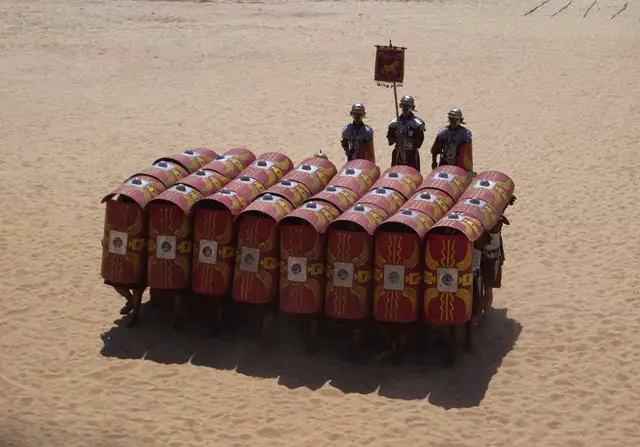
Testudo, a slow fighting formation, was another famous and effective formation on the Roman battlefield.
It consisted of a shield- wall formed by the army men and was mostly used as the defensive form rather than an attack. This formation was majorly the frontline strategy used by the Roman legions.
The formation would protect the foot soldiers from the attacks of missiles and archers. Though this formation was effective, it wasn’t easy to form, requiring a highly skilled workforce and a sense of synchronization.
Testudo, when firmed properly, would act as 360- degree wall of protection. The front-liners had to kneel behind their interlocked shields, and the second line would have to hold the shield high above their heads.
This strategy worked in favor of Romans during their battle as it was strong and a very tight formation. The soldiers within this formation would hardly get hurt. Also, the positioning of the shield kept no gap for any bows or mussels to enter during the sieges.
8. The Wedge
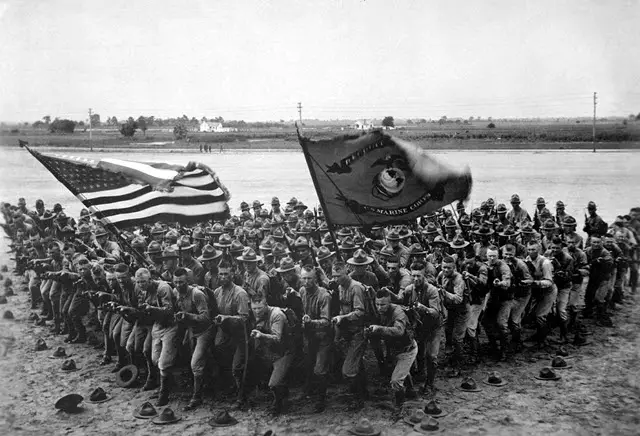
The Wedge, commonly known as a flying wedge or flying V, was another major strategic formation used by the Romans on the battlefield.
The soldiers were placed in a position forming a triangular formation, and they would move forward together in a cluster. This formation was comparatively easier and faster to make, so it was used in most battles.
The center point of the Wedge was known as the edge and consisted of the best men both by experience and skills. These men held shields, gladius, and swords to make sure not to let any enemy pass through them.
The swords from the sharp wedge would drive deep into the enemy’s body, making a massive effect. So, this formation was considered an aggressive one that could crack open the enemy formation.
Similarly, the soldiers were placed so close that they could easily defend their fellow soldiers when in need.
The most famous wedge formation was during the fight against Alexander the Great. However, it had a small group of legions and was later used by the Medieval European armies.
7. The Plumbata
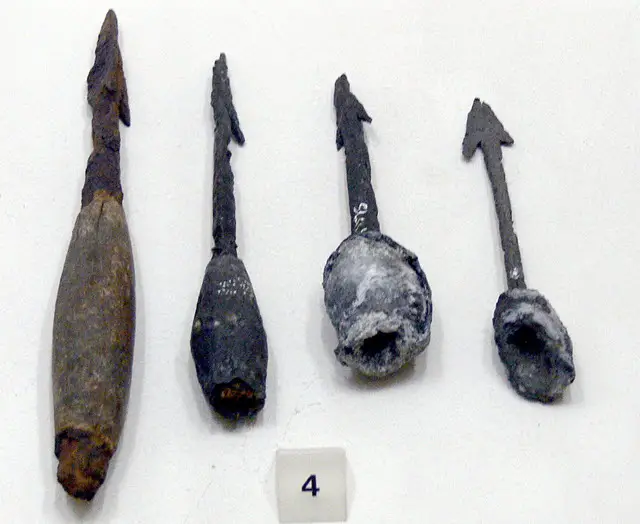
Romans used numerous interesting and creative formations but did not lack back in terms of weaponry. The Plumbata was one of the most effective and tactical weapons on the battlefield.
It was made of iron and used as a throwing dart, and had a lead weight attached at the tip. The shaft portion was made of wood and sometimes of Iron.
Though the Romans made the major use of Plumbata, it was first used by the Greeks during 300 AD. Its effectiveness attracted the Romans, so they started using it in a modified way.
The soldiers responsible for using Plumbata on the battlefield would throw the Plumbata at their enemy in a streamlined manner.
Every cluster was given a weapon as per their skill and experience; the legions using Plumbata skillfully were honored by the Emperors Diocletian and Maximian. They were also rewarded with prestigious titles as Jovian and Herculean.
6. The Onager
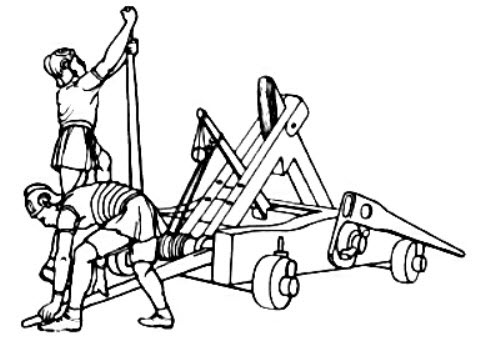
Onager was amongst the most effective weapon created and used by the Romans. It was used mostly during the sieges, where they would propel projectiles very high into the air and break down the enemy walls.
The Onager, a type of catapult with force was made from a twisted rope. The rope used in it was made from sinews as it was very springy and could attack up to a higher distance. Apart from the rope, it was made by using a bucket, bowl, and sling. The heavy stone or rock was thrown from the Onager.
It could fire up to a 60 pound stone or a 3 foot bolt around 15000 feet. And, its speed was up to 115 miles per hour or more, depending on its module.
The stone was painted black to make them invisible during the throw and also look a bit deadly. Besides, the whizzing sound produced by the stone during the throw would terrify the enemy to death.
This helped soldiers to stay at a distance and still attack and gain victory. It was a dangerous weapon as anyone hit with this would be dead within a few seconds.
5. Greek Fire

Greek Fire was a liquid weapon made by the Byzantine Empire. It was also known as the Sea Fire and was developed during the 7th Century AD.
This weapon was used after heating and pressurizing. The delivery of the fire was done through a tube known as Siphon.
The specialty of this weapon was that it could fire with great speed and fire when floating on water. So, the fire once lit was impossible to extinguish as the water did not affect it.
The Greek Fire was mainly used to set fire to the ship of the enemy. This weapon proved to be most efficient during the Naval battles, and the battles fought by the Eastern Roman Empire.
The jars full of Greek fire were wrapped with a tow, then soaked in a special substance, and were thrown towards the enemy ship by catapults.
However, the process and materials used to make the military never revealed this, but some guessed it could be the mixture of sand and very strong vinegar.
Some also believe it could have been made by mixing saltpeter or calcium phosphide.
4. The Corvus
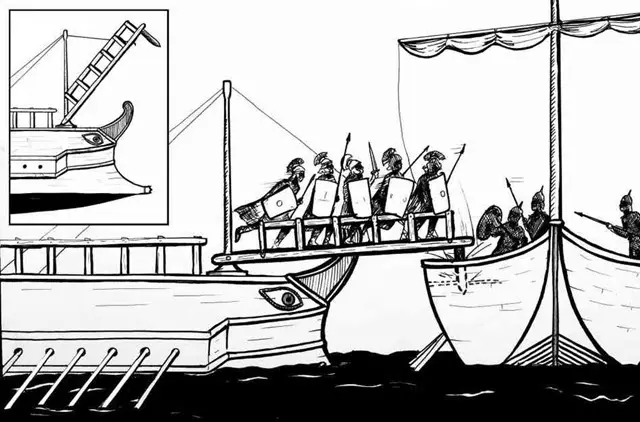
The Corvus, Rome’s creative weapon, was a moveable bridge with a metal prong that could be dropped onto the enemy’s ship. It was used mostly during the First Punic War against Carthage as a boarding device for accessing the enemy’s ships.
The Corvus had sharp and heavy spikes on its tip used to cling to the deck. The land-based skill was taken to the seas. It needed quite a skill to function as the bridge had to be lowered from a ship to allow the boarding of others.
Also, it was effective as the enemy had no way to counteract due to its speed and force. However, like most other weapons, it too had a drawback, and it could only be used in a smooth sea. The rough sea would jeopardize its structure and could not function well.
3. The Pilum
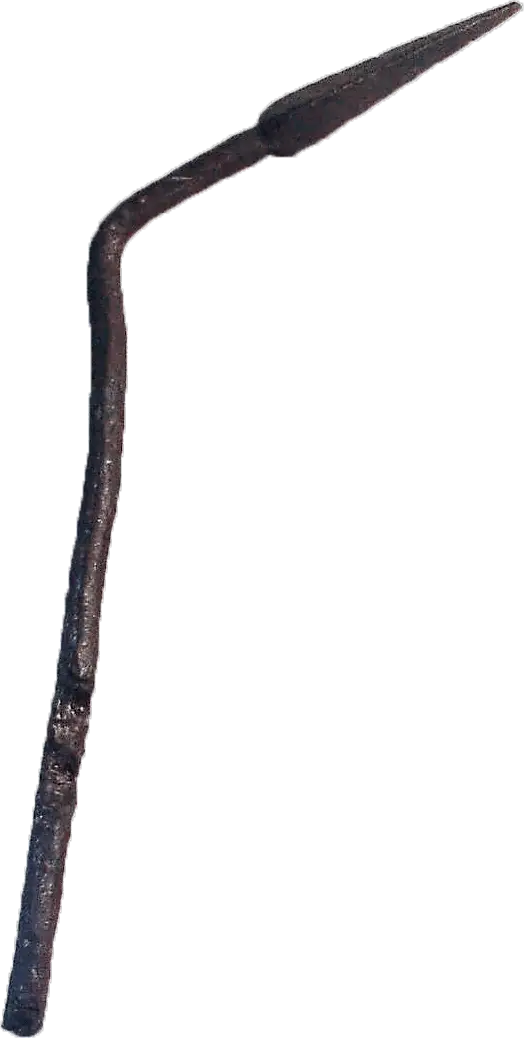
A spear named Pilum was used to kill an enemy from a distance. It was mainly designed to pierce the enemy and their armor and would work perfectly if thrown accurately from a distance of around 100 feet.
It was built in such a way that the tip would pierce deep into the body of the enemy or on the armor, and the wooden shaft would bend so that the enemy could not throw it back. Also, the weapon was very long and not easy for everybody to handle.
It was almost 8 feet long, with a 6-foot long wooden shaft and 2-foot long iron shank. The tip was shaped in a triangular shape and was difficult to remove from the place it impaled on. The tip was made in a perfect shape using roman scientists and rapid heating and cooling.
2. The Carroballista

The Carroballista was developed in the 5th century BC by the Greeks but was used more by the Romans. It was a modified version of Manuballista, a siege engine.
Romans used numerous weapons, but this stood to be one of the most advanced weapons with a two-armed torsion engine. It was a pure mixture of a catapult and the Ballista.
This weapon was used in firing heavy bolts by pulling at maximum power the highly energized spring. It’s required at least 2 men to function during the battle.
Like in most cases, every legion was given different weapons to handle, including 55 Carroballista during the battle. Since this weapon was a type of mobile field artillery, the bolts were fired from a huge crossbow-like mechanism on the battlefield.
However, this weapon was heavy and difficult to function with, but the result is brought on the battlefield was worth the hard work.
1. Medical Treatment on the Battlefield
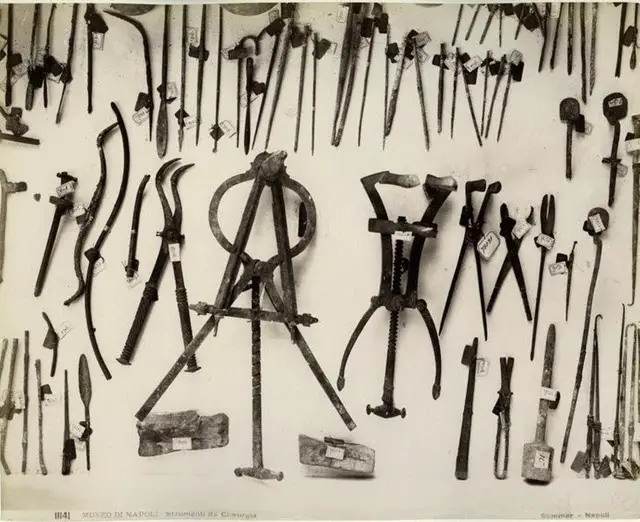
Romans used professionals who were highly trained experts to look after the injured soldiers. The instruments used were also very effective and modern for that period.
Though they had no idea about bacteria, they did focus on the hygiene and cleanliness of their soldiers and the area they lived in.
Similarly, the surgery was also done despite no proper knowledge and proved to work in their favor. The instruments used in the surgery were disinfected using hot water. Also, the wounds were cleaned using acid vinegar and used opium or scopolamine to relieve the pain.
Besides, they focused on the soldiers’ diet as they realized that the diet would perform well during the battle.
Roman had immunes to take of the required professional work. They hired a group of professionals such as engineers, architects, and doctors to do their needful.
Conclusion:
The Roman Empire could not have been successful and impactful without the creative and effective tactics used during the battles.
Every emperor came up with new and innovative tactics in times of battle and proved to be successful in most cases. Everything that was invented and used was efficient and became an inspiration for the next empire.
